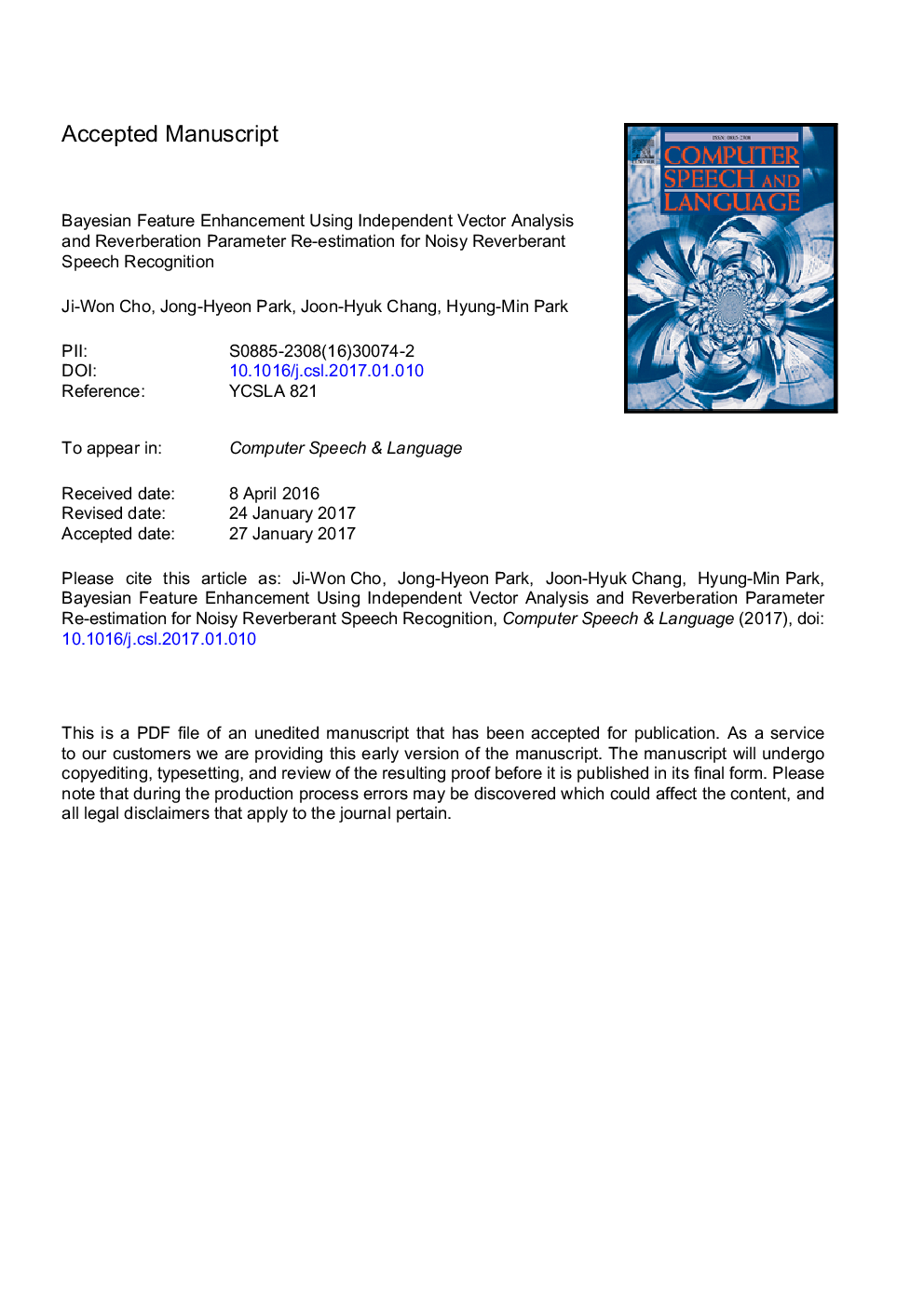| Article ID | Journal | Published Year | Pages | File Type |
|---|---|---|---|---|
| 4973728 | Computer Speech & Language | 2017 | 51 Pages |
Abstract
Because speech recorded by distant microphones in real-world environments is contaminated by both additive noise and reverberation, the automatic speech recognition (ASR) performance is seriously degraded due to the mismatch between the training and testing environments. In the previous studies, some of the authors proposed a Bayesian feature enhancement (BFE) method with re-estimation of reverberation filter parameters for reverberant speech recognition and a BFE method employing independent vector analysis (IVA) to deal with speech corrupted by additive noise. Although both of them accomplish significant improvements in either reverberation- or noise-robust ASR, most of the real-world environments involve both additive noise and reverberation. For robust ASR in the noisy reverberant environments, in this paper, we present a hidden-Markov-model (HMM)-based BFE method using IVA and reverberation parameter re-estimation (RPR) to remove additive and reverberant distortion components in speech acquired by multi-microphones effectively by introducing Bayesian inference in the observation model of input speech features. Experimental results show that the presented method can further reduce the word error rates (WERs) compared with the BFE methods based on conventional noise and/or reverberation models and combinations of the BFE methods for reverberation- or noise-robust ASR.
Keywords
Related Topics
Physical Sciences and Engineering
Computer Science
Signal Processing
Authors
Ji-Won Cho, Jong-Hyeon Park, Joon-Hyuk Chang, Hyung-Min Park,
